The best TV dramas on Hulu
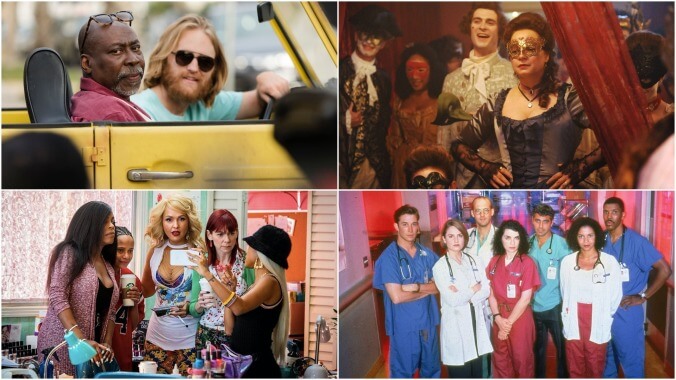
Streaming libraries expand and contract. Algorithms are imperfect. Those damn thumbnail images are always changing. But you know what you can always rely on? The expert opinions and knowledgeable commentary of The A.V. Club. That’s why we’re scouring both the menus of the most popular services and our own archives to bring you these guides to the best viewing options, broken down by streamer, medium, and genre. Want to know why we’re so keen on a particular show? Click the links for some in-depth coverage from The A.V. Club’s past. And be sure to check back often, because we’ll be adding more recommendations as shows come and go.
Hulu subscribers can also check out our lists of the best TV comedies and the best movies on the service—and if you’re the type who likes to bundle, we’ve got film picks for Disney+, too.
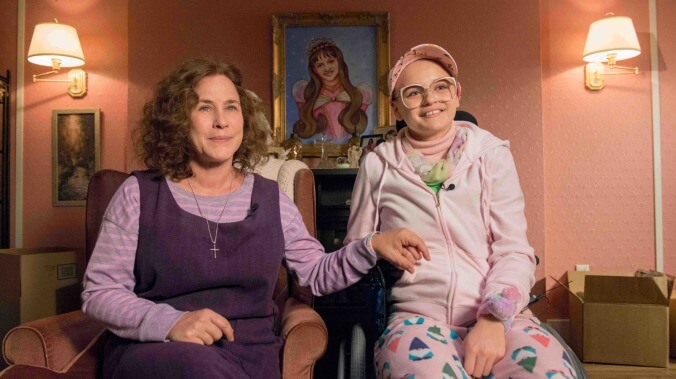
As always with true crime—a genre where we always know, or at the very least can find out, how the story ends—the gratification of The Act is in the telling. And the show, spread out over 10 leisurely hours that greatly expand on Lifetime’s condensed treatment of the story in the recent TV movie Love You To Death, only gets more compelling with every new reveal. []
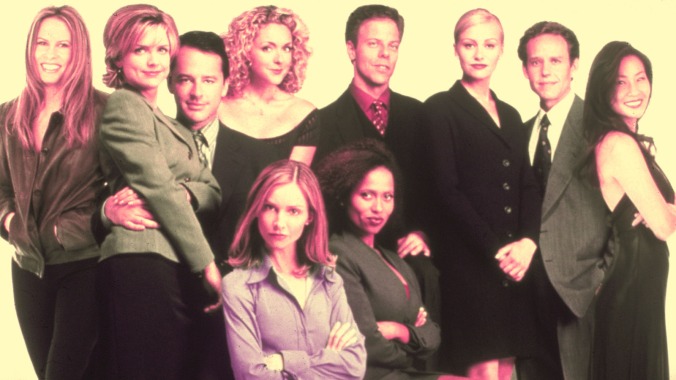
Former lawyer David E. Kelley—who already had Chicago Hope and The Practice on his plate—was tasked by Fox with creating a show about beautiful, successful people. To his credit, Ally McBeal turned out to be more than Melrose Place: The Corporate Years, casting New York stage actress Calista Flockhart as the young associate who goes to work at the Boston law firm of Cage And Fish, where she encounters the lost love of her life, Billy Thomas (Gil Bellows). Kelley realized his show’s early promise by turning Ally into a Walter Mitty of sorts: Bizarre, fantastical asides punctuated the show’s concepts and offered striking visuals not seen on other shows of the time. When Ally learns that Billy is married, she’s hit in the heart with arrows. When Billy suggests coffee, she pictures them frolicking naked in a giant coffee cup. When she tells us in voice-over narration (a device that gained ubiquity on network comedies in Ally McBeal’s wake) that she always feels like a little kid in client meetings, she’s then shown as a child, swinging her legs in a giant chair. []
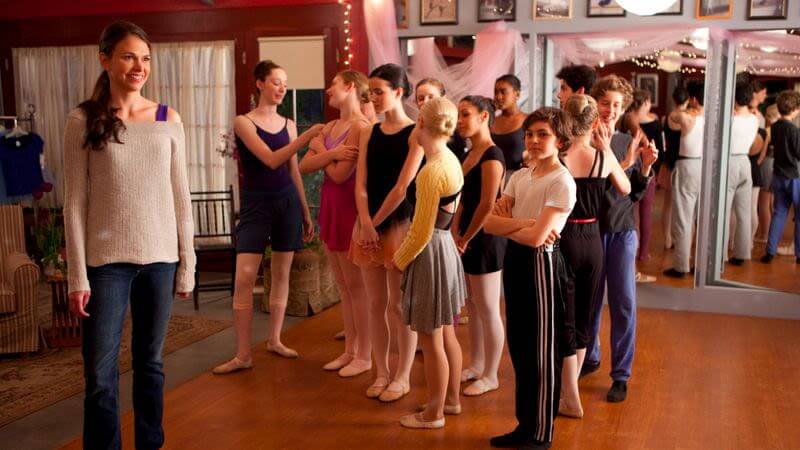
Escaping a career cul de sac in Las Vegas, a ballerina-turned-showgirl makes a new career as a dance instructor in a sleepy California town—where she has as much impact on her young charges and the townsfolk at large as they have on her. A return to series drama for Gilmore Girls creator Amy Sherman-Palladino, Bunheads wrapped its first season on a fantastic string of episodes—only to be let go by ABC Family after lingering for months in a renewed-or-canceled limbo. Its first-time leads (chief among them Tony winner Sutton Foster and sweet-and-sour spark plug Bailey Buntain) are now available to scooped up by other shows, but will those shows give them occasion to hoof it to showtune standbys and college-radio staples? That’s not to mention the way the show used the performing arts to channel (and compare) adolescent and middle-aged angst in ways Smash and Glee could only fantasize about. []
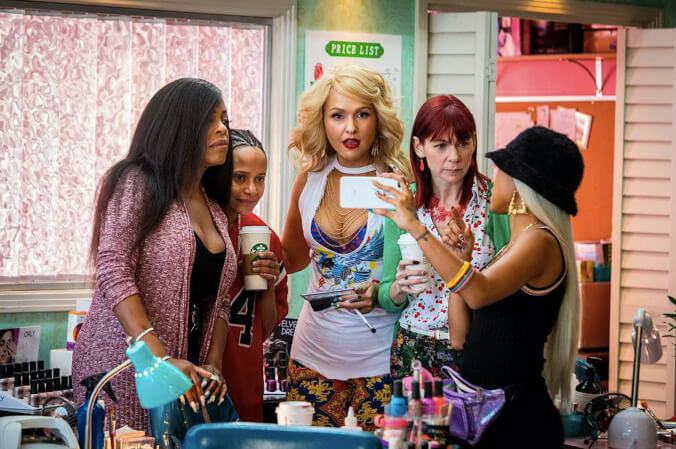
Claws continues to deliver an experience that is suspenseful, unorthodox, and relentlessly fun while testing its own boundaries. It’s hard to guess where this season will take us—playing it safe has never been part of the formula. But what we can glean so far is that this casino will serve as the setting for some significant changes for our manicurist mafia, and neither Desna’s reign nor the security of their friendship will come easily. []

In the final season of , Todd and Glenn Kessler’s riveting legal thriller, master manipulator Patty Hewes (Glenn Close) tells her protégé-turned-target-turned-rival Ellen Parsons (Rose Byrne) that her favorite cases are the ones in which all the facts are up in the air. This little admission is more than a testament to Patty’s mastery of the law. It’s a nod to her resolve, which she’s demonstrated time and again by who and what she was willing to sacrifice; the woman who regularly represents David against Goliath isn’t thrown by a seeming lack of evidence. It’s also another one of Patty’s mind games. As they go through all the pretrial motions in a case that was somewhat inspired by Julian Assange (the details of which, as Patty notes, aren’t all that important), the blue-chip lawyer is trying to undermine Ellen’s confidence. Given their complicated relationship, she might also be imparting another lesson. Luckily for Ellen, this one didn’t involve attempted murder. But there was always next time (not to mention the first time). []
Removed from its debut buzz, forgotten fashions, and , Dawson’s Creek has as promising an introduction as any teen soap. The opening scene is remarkably efficient, introducing Spielberg, sex, and the central romance of the series, all in Kevin Williamson’s snappy, pop-literate dialogue. Part of the seduction of the scene is that Dawson speaks with lines so self-conscious he may as well be another life form, but he’s totally oblivious to the basic truth that Joey is reacting to: Adolescence is changing their intimate friendship. On some level he’s aware. At the end of the scene, in Steve Miner’s promo-ready overhead shot of the two characters lying in bed, Dawson can’t get comfortable. He closes the scene by asking, “Why’d you have to bring that up?” At the end of the episode, he accepts that the two friends shouldn’t keep sleeping next to each other, but it seems like acquiescence more than any conscious understanding. This is still the same guy who, a few hours earlier, accuses his father of making everything about sex for deigning to broach The Talk before Dawson’s quasi-date. It’s going to be a long, slow journey for Dawson Leery. []
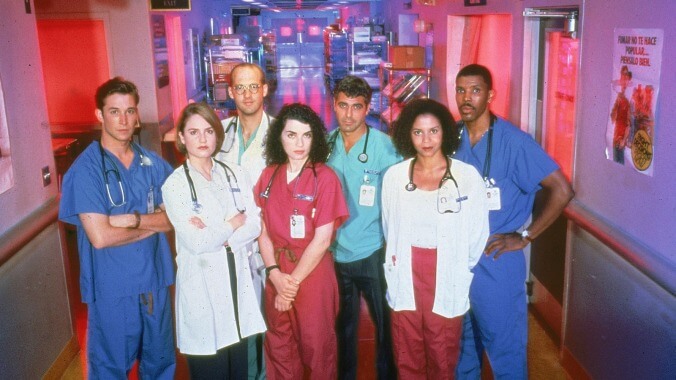
ER lasted so long (15 years) and killed its characters off in so many ridiculous ways that it’s hard to remember it was once the jewel in the crown of network drama. When it premièred in 1994, up against much-hyped fellow medical drama Chicago Hope, it became an instant sensation. Even in the pilot, the show had a blockbuster feel. It pulled off things people hadn’t seen before on TV, with long Steadicam shots that turned the show’s medical procedures into white-knuckle thrill-rides. The sight of that charismatic, pretty, but appropriately de-glammed cast shouting medical lingo while wheeling gunshot victims into grimy trauma rooms felt worlds away from any other hospital drama, even the great . []
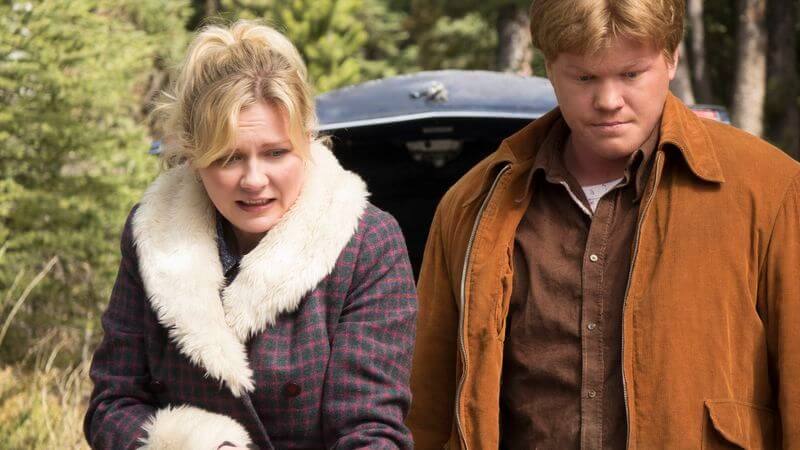
Noah Hawley took the Coen Brothers’ Fargo film and used the general atmosphere to create something that felt unique: an anthology series set in a weird, wonderful world of colorful characters and unexplained events. The show is packed with stellar performances from the likes of Kirsten Dunst, Jesse Plemons, Mary Elizabeth Winstead, Allison Tolman, Ted Danson, and so many others—shout-out to Dunst’s series-best line reading, “It’s just a flying saucer, Ed, we gotta go!”—and part of the show’s appeal is in watching these actors play with the dialogue and the tone. More than anything though, Fargo crafted three seasons of great storytelling bolstered by complex character motivations and more than a few memorable set pieces. []
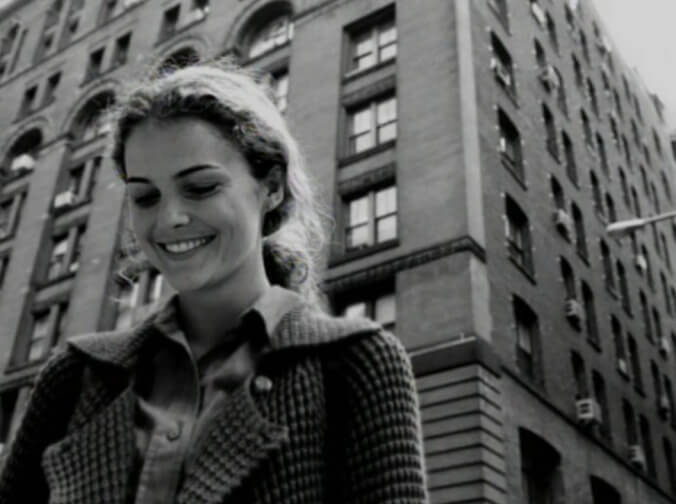
For four seasons, viewers watched with rapt attention as a young college student was constantly made to choose between two suitors on The WB’s Felicity. To be fair, there was more to J.J. Abrams and Matt Reeves’ coming-of-age drama than that, but there’s no denying that the love triangle between Felicity Porter (Keri Russell), Ben Covington (Scott Speedman), and Noel Crane (Scott Foley) dominated fans’ interest. From September 29, 1998 to May 22, 2002, ’shippers of all stripes tuned in to learn which head of luscious locks their mop-topped heroine would choose to run her fingers through. And the series delivered that dose of drama, leaving Felicity to frequently vacillate between the two men, who represented two distinct archetypes. Speedman’s Ben gave every other brooding late-’90s hunk a run for their money, while Foley’s nerdy Noel melted hearts with his unwavering affection for the heroine. []
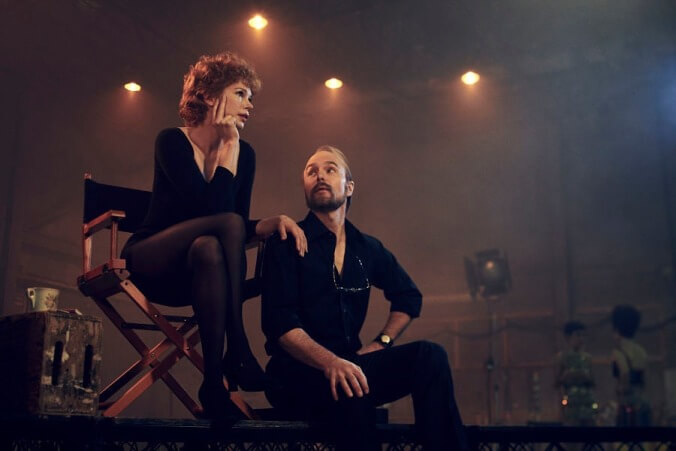
Too many biographical stories about self-indulgent rogues lean hard into the scenes where the subjects behave like abusive, out-of-control jerks, leaving audiences with little to no indication of why these characters might actually matter. If nothing else, Steven Levenson and Thomas Kail’s Fosse/Verdon deserves some credit for taking the time to explore multiple facets—the shiny and the splintered—of one of the American musical theater’s most fruitful and complicated relationships. As played by the lithe and soft-spoken Sam Rockwell, the influential director and choreographer Bob Fosse is as charismatic, driven, and inspired as he is rapaciously needy; and Michelle Williams’ brassy, boundlessly energetic dancer Gwen Verdon is at once a nurturer and an opportunist, taking sometimes undue advantage of whatever power the sexist mid-20th century showbiz would afford. With its cleverly structured episodes and its loving recreations of a bygone Broadway and Hollywood, Fosse/Verdon doesn’t lack for razzle-dazzle. But what makes this miniseries great is its nuanced understanding of how artistic collaborations really work—and its insistence that there’s more to creators than just their grossest personal failings. []
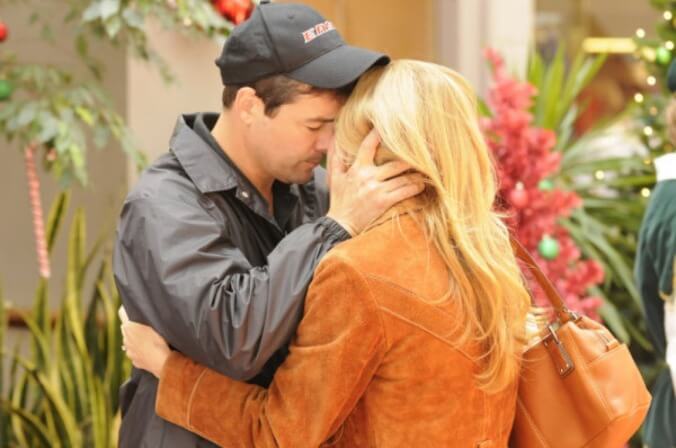
Nominally a show about high-school football teams, Jason Katims’ beloved adaptation of Friday Night Lights used the Dillon Panthers and East Dillon Lions as gateways to explore all the lives lived within a small West Texas town—all the dreams and setbacks and heartbreak of its residents. The simple drama of the everyday ascended to an epic level for the players, coaches, and residents of Dillon, the stage of the football field frequently the only place where anything in life made sense to any of them. And on a day where family is important, there’s no better family to look to for inspiration than Eric and Tami Taylor, played to perfection by Kyle Chandler and Connie Britton. []
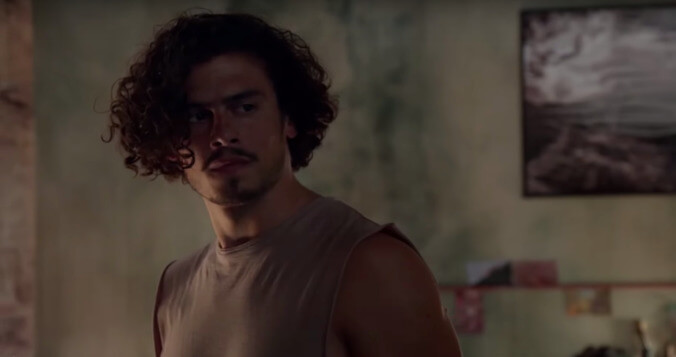
Freeform—for the most part—gets it pretty right when it comes to LGBTQ+ representation. The Fosters existed in a world where queer representation and acceptance mattered, on top of its natural diversity, as the titular Foster (well, the Adams Foster) family unit was helmed by lesbian couple Stef and Lena. So it makes sense that its spin-off, Good Trouble, exists in that same world. Only, now with Adams Foster sisters Callie and Mariana off on their own in adulthood, that representation and acceptance extend beyond being the parent storyline on a teen show. Good Trouble focuses on the twentysomething experience of really living on your own for the first time, and an integral part of that is also its discussion and depictions of sexuality—from its natural acceptance of the fluidity of sexuality to its depiction of how hard it can be to come out to your own family, even if you’re able to be open about it to the rest of the world. And the series’ main relationship features a bisexual Latino character who has to deal with issues of biphobia (even from open-minded characters) as well as what his sexuality means coming from a family that’s shut out his transgender sister—that culturally, refuses to talk about it. Good Trouble doesn’t pretend hatred and bigotry don’t exist, but it also doesn’t pretend that everyone in the world—or at least a city like Los Angeles—is straight and lily white. And it’s heavily invested in those different perspectives and identities. []
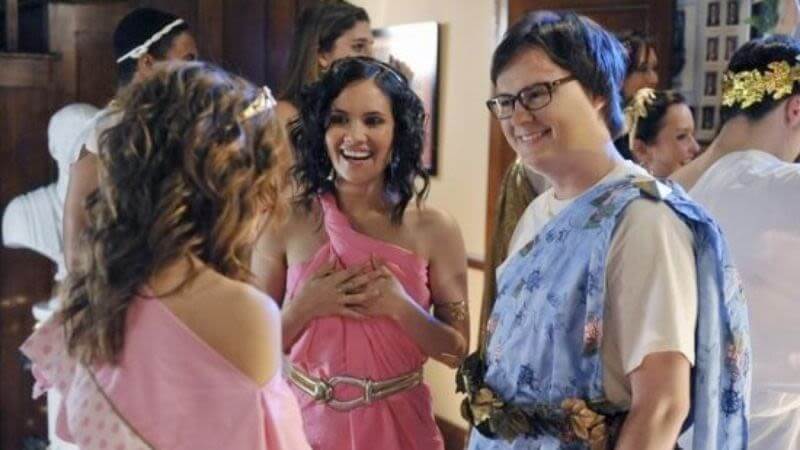
For a show all about fraternity and sorority life (and, of course, partying) on ABC Family, Greek shouldn’t have been half as good as it was. In fact, it probably shouldn’t have been good at all. But with its relatable characters (a huge surprise given the show’s focus), witty dialogue, and keen attention to pop-culture detail, Greek found itself surviving and succeeding as the now “defunct” network’s (having transformed into Freeform in January of 2016) best show and the last of its kind. It was a John Hughes movie in 21st-century television form. []
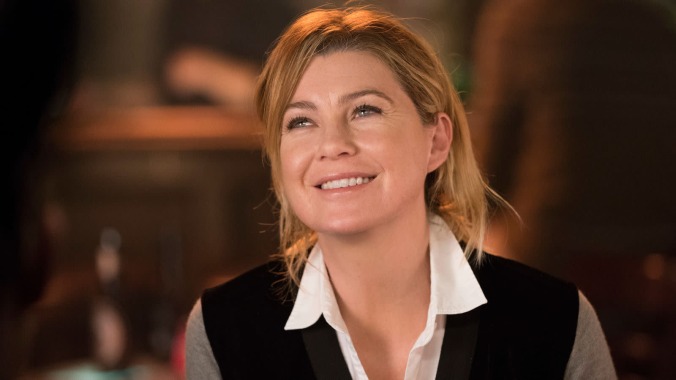
Shonda Rhimes’ soapy hospital drama is now in its 16th season, placing it in the all-time top-10 longest-running scripted primetime U.S. TV series, along with Gunsmoke and Lassie. At this point, Grey’s Anatomy’s longevity is its not-so-secret weapon; it has perfected its formula of medical problems as metaphors for relationship ones (original series title: Complications), aided by a now-familiar-as-distant relatives cast of really, really good-looking doctors. And it’s already renewed for season 17. []
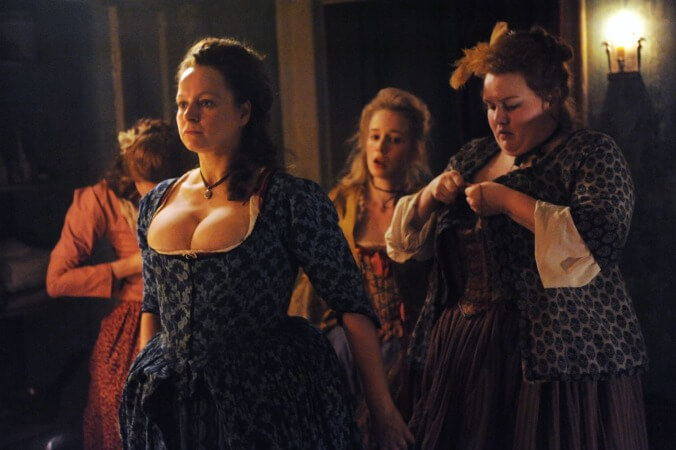
Despite its impeccable period fashions, Harlots has more in common with The Sopranos than most Regency dramas. This woman-led series, which centers on dueling brothels in 18th-century London, deals in the same illicit business, power struggles, and family-before-all ethics. But where creators Moira Buffini and Alison Newman depart is in their treatment of women. The patriarchy still looms, but rival madams Margaret Wells (a top-notch Samantha Morton) and Lydia Quigley (Lesley Manville, whose powder just barely keeps her rage at bay) enlist few male soldiers in their battle, relegating them to their customer base. Things grow increasingly competitive and complicated over the candy-hued first season—the only thing that is clear is that neither has the moral upper hand, a more effective cliffhanger than any that preceded it. And there were several, because Harlots loves to dangle those loose threads in a kind of storytelling striptease. But for all that flash—not to mention flesh—the series’ biggest reveal is its frank discussion of sexual politics, which remains as pertinent as ever. []
Police officers (or blues) in a nameless American city work the beat bringing together issues of everyday crime-fighting and domestic strife into the precinct. It’s the first major success of Steven Bochco who, along with creator Dick Wolf, has defined crime dramas on television for the last several decades. Since it aired in the ’80s, countless shows have copped Hill Street Blues’ style. It’s weird to call elements of the show, like an interracial cast, groundbreaking. But at the time, they certainly were, as were the combination of both serial and episodic arcs, discussion of not-ready-for-primetime issues like alcoholism, and plots without the black-and-white morality of previous cop shows. []

While Quentin Tarantino is certainly responsible for the best film adaptation of an Elmore Leonard novel, Justified stands as the greatest evocation of the Leonard spirit, from the roll-off-the-tongue dialogue to the indelible characters that feel lived-in the moment they’re introduced. The pulp storylines involving the various criminal factions in Harlan, Kentucky compelled on their own merits, and yet the interpersonal relationships were what elevated Justified to the heights of greatness. Timothy Olyphant’s turn as the tempestuous Raylan Givens is one for the books, but his character isn’t whole without his archrival, Boyd Crowder, played by Walton Goggins. After all, “We dug coal together” might be the quintessential expression of the thin line between cop and crook this decade has produced. []
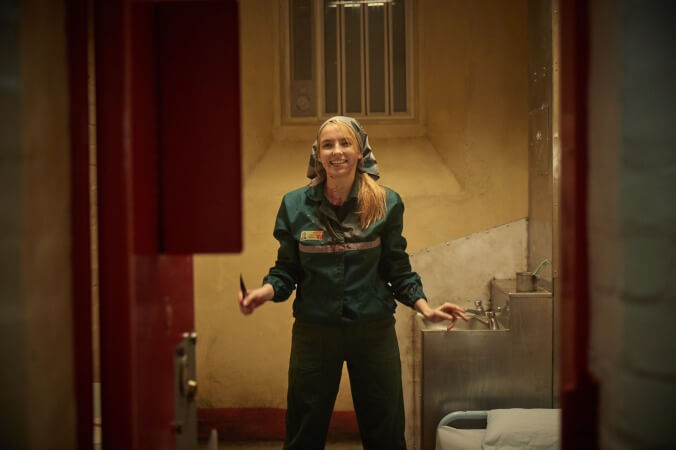
On its surface, Killing Eve appears to be a good/evil standoff, but it offers so much more than that. Shepherded to TV by ’s Phoebe Waller-Bridge, the cat-and-mouse series features Jodie Comer as impossibly charming assassin Villanelle ,and Sandra Oh as the crafty MI5 operative on her tail, but the twists and turns of the chase seem to surprise even the characters themselves. Comer is a revelation as the chameleon-like killer with no qualms at all about taking down whoever she was paid to, until Oh’s spy brings up buried memories from her past. The chase in this explosive first season was Les Mis-like epic, the killer and the detective’s eventual confrontations over dinner or in a remote field anything but anticlimactic, only heightening the suspense between the two. Eve’s quirky and duplicitous co-workers and Villanelle’s paternal guide Konstantin (Kim Bodnia) added depth and an intriguing Russian subplot to the chase, but they never fully stole attention from the series’ magnetic fulcrum. Somehow, we rooted for both Villanelle and Eve, and even though they each admire a lot about each other, only one can ultimately prevail. []
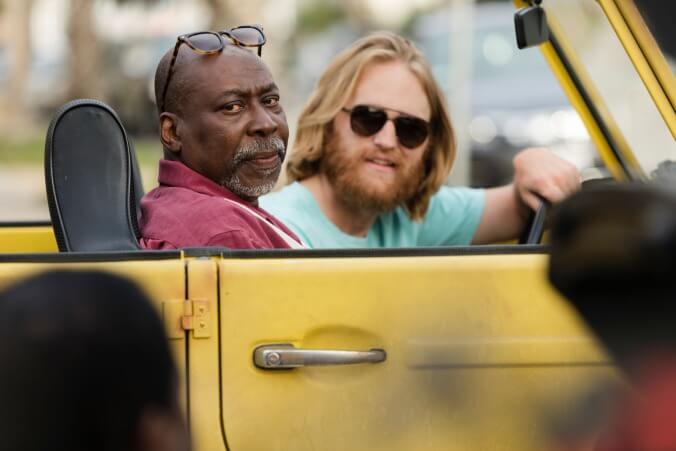
Lodge 49 exists in a class of its own, and not just because it’s difficult to describe. Jim Gavin crafted an eminently specific, deeply personal vision about the feeling of living through this surreal age. It’s remarkable he also found a way to infuse it with a type of optimism that’s neither saccharine nor naïve. It’s important for disparate people to gather in a safe space, share a drink, and try to mend their broken souls together. []
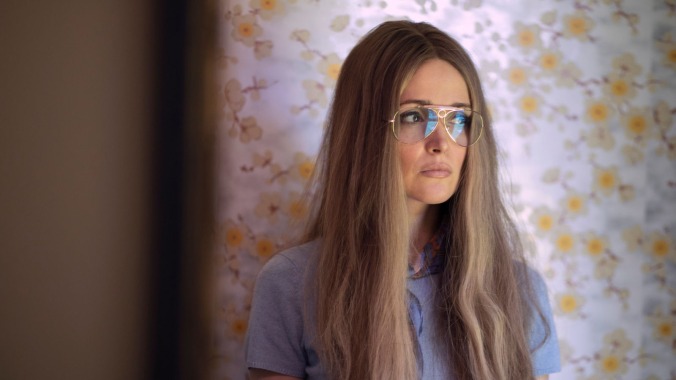
FX on Hulu’s grand drama about one woman’s fight against second-wave feminism touts one of the best ensembles in recent years. Mrs. America stars Cate Blanchett as Phyllis Schlafly, the real-life conservative woman who stood against the ratification of the Equal Rights Amendment. Blanchett alone is enough of a powerhouse to ramp up excitement; adding Rose Byrne, Sarah Paulson, Margo Martindale, Uzo Aduba, John Slattery, and appearances from James Marsden and Niecy Nash (to name only a few!) makes it an embarrassment of riches. The product of predominantly female talent—including writer and executive producer Dahvi Waller of and —culminates in the kind of distinct, sprawling storytelling that most have to come to expect from FX. Mrs. America will undoubtedly pull double-duty as an evergreen story about the battle for inequality and a suitable escape from reality via unmitigated star power. []
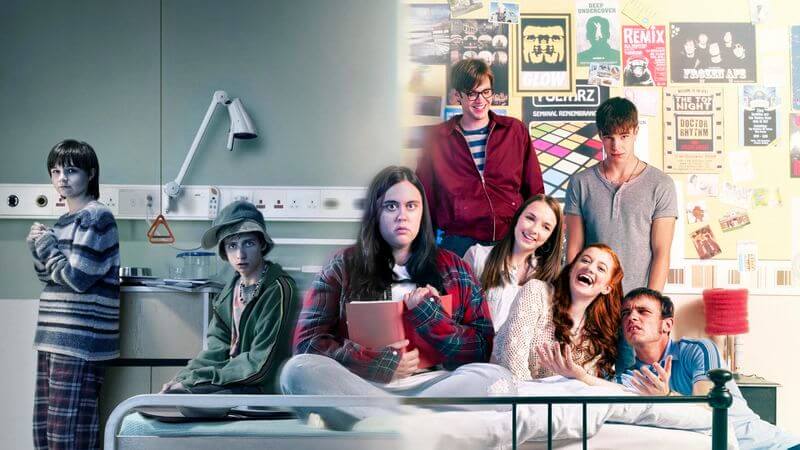
Rae Earl (Sharon Rooney) weighs 16 stone (that’s about 220 pounds) and has just left a four-month stint at a mental hospital that her mom was late to pick her up from. Rae is a lovely character to spend time with as she tries to reintegrate herself back into the life of her childhood friend Chloe and her clique in 1990s Lincolnshire. The show, taking place over three seasons, is very much rooted in Rae’s mind, which comes to life in vivid ways on screen. Rooney is fabulous as Rae and the writing is top notch, based on the diaries of the real Rae Earl, a British broadcaster and writer. (A crush isn’t just a crush, for example, he’s “gushington central.”) But My Mad Fat Diary’s real charm is in how perfectly it captures that feeling of adolescence. [Molly Eichel]
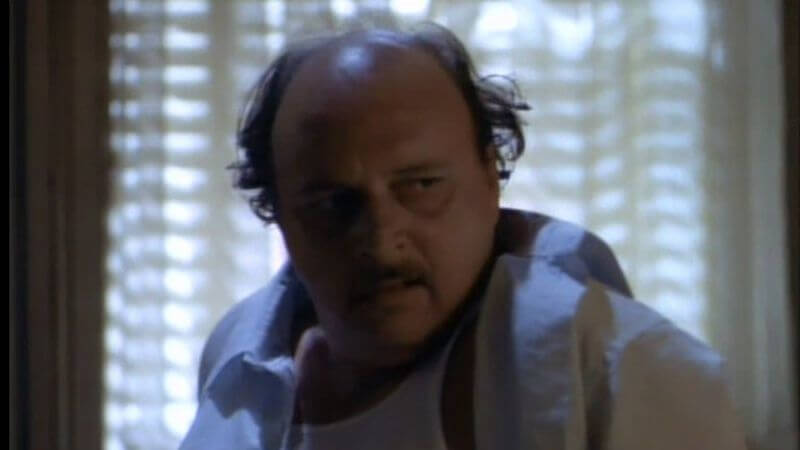
Hill Street Blues and NYPD Blue were credited for revolutionizing television in their respective decades, and for similar reasons. Both shows’ first episodes are immersive experiences, thrusting audiences directly into fast-paced, dangerous, at times blackly comic worlds, populated by so many jaded lawmen and vicious criminals that at first, it’s hard to keep track of who’s who. Both then expand out to include glimpses of the cops’ complicated home lives, while still finding time to show the police interfacing with the other side of the criminal justice system, where state’s attorneys and defense lawyers are slugging it out. Throughout their respective runs—1981-87 for Hill Street Blues on NBC, 1993-2005 for NYPD Blue on ABC—both shows explored the edges of what broadcast censors and the FCC would allow, in an overt attempt to compete with other media. Hill Street Blues looked to be as sophisticated and adult as contemporary cinema, which was in the middle of a heyday of R-rated maturity. NYPD Blue was looking to draw people away from cable TV, which at the time was luring viewers with the promise of nudity and profanity, even though its original programming wasn’t yet up to the networks’ best standards. []

In a television landscape full of antiheroes, the Braverman family proudly flies the banner for the opposite side. Parenthood is the rare family drama that gets better as it goes along, with the first half of season four sealing its place as one of the most touching hours on television. The show’s magic trick is consistently spinning storylines that could easily veer into after-school special territory into gripping, emotional, well-observed treatises on what it means to be part of a family—for better or for worse. []
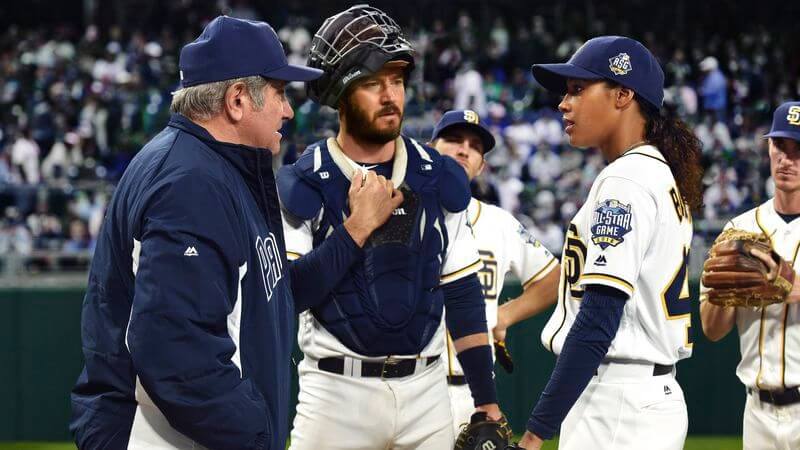
Ginny Baker (Kylie Bunbury) is on the precipice of athletic history: When she takes the mound for the San Diego Padres, she’ll be the first woman to play a regular-season game in any of the major American pro leagues. It’s a milestone for some, and a reality-rending cause for alarm for others, but the fabric of the universe holds together long enough to introduce the varied types of teammates in Ginny’s life, from the ones who wear cleats (including Mo McRae as Ginny’s buddy from the minors and Mark-Paul Gosselaar as a grizzled veteran catcher) to those in the C-suite (a no-nonsense agent played by Ali Larter, and Mark Consuelos as the Padres’ general manager). As she breaks into the boys’ club(house), Ginny brings with her a mean screwball and a ton of emotional baggage. []

What I love about Power is how unabashedly female-skewing it is, even as it explores the gritty criminal underworld, territory aggressively staked out by male storytellers and typically consumed by male audiences. Power is essentially urban street lit, a story not unlike those available for 10 bucks on folding card tables on Adam Clayton Powell, but told with the planning and craft demanded of a competent scripted television show. That in itself is kind of awesome, considering how little television is created with black women in mind, and it’s even cooler in the case of Power, which was developed from 50 Cent’s concept by a black woman, alumna Courtney Kemp Agboh. []
This miniseries adaptation of Pride & Prejudice is still the gold standard, with a stoney-faced Colin Firth as Mr. Darcy and Jennifer Ehle as the charming and willful Elizabeth Bennet. Six hours may seem like a long time for a slow-moving period piece, but there’s a reason this story keeps getting adapted: it’s thoroughly engaging, and this particular cast is especially so. The perfect backdrop for a long day of cooking, it’s as pleasant as other British imports like but even easier to drop in and out of (though we also recommend devoting your full attention to it at some point, perhaps a gray, snowy day in February; it’s worth every minute and goes great with hot cocoa). It’s a romance but not a saccharine one, and the female-heavy cast includes Julia Sawalha (Absolutely Fabulous) as the headstrong and carefree Lydia, and a small appearance from in her first television role. []
In April 1991, Helen Mirren starred for the first time as DCI Jane Tennison in Prime Suspect, a two-part, four-hour TV movie that aired on consecutive nights on ITV in the UK, and became an immediate hit, both at home and abroad. At the time—pre-Homicide, pre-Cracker, pre-NYPD Blue—Prime Suspect stood as the grittiest television procedural since the heyday of Hill Street Blues. A sequel aired the following year, and Mirren returned to play Tennison in five more series, with the last one airing in 2006. By the time the series ended, 15 years after it began, television crime stories had changed dramatically. But contemporary cop shows from CSI to The Closer (and even more offbeat offerings like Life On Mars) are all Prime Suspect’s progeny to some degree. []

Olivia Pope (Emmy-nominated Kerry Washington) is Washington D.C.’s top “fixer,” the woman who figures out ways the rich and powerful can get out of the scandalous situations they’re caught in without irreparably harming their reputations. But because this is television, Olivia’s own reputation is constantly dancing just ahead of being ruined by all the illicit things she’s done. Olivia and her crew are among TV’s most amoral characters, and watching them work to save their own skins is at once exhilarating and queasy-making. Add crackerjack dialogue from creator Shonda Rhimes and her writers and an enthralling, cliffhanger-every-second pace, and viewers will find one of TV’s most addicting shows. []
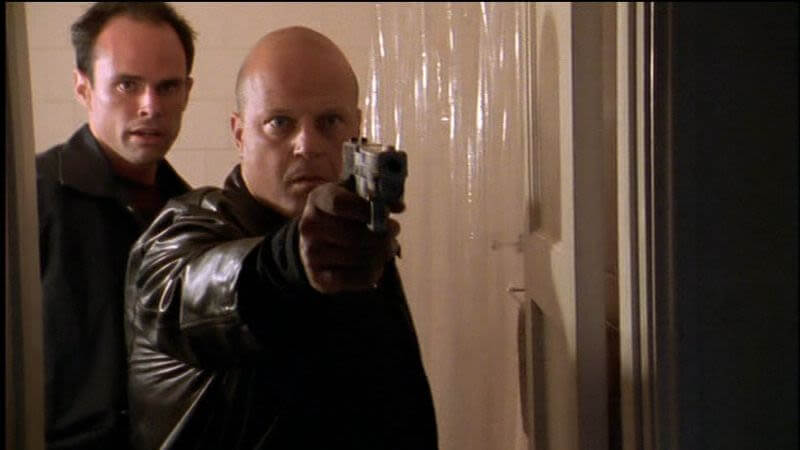
There were earthy police dramas before The Shield, but nothing quite this visceral. Where The Job gets too slick for anything to stick, The Shield rolls around in the muck. Where NYPD Blue gets depressed, The Shield gets pumped. Where Hill Street Blues gets dangerous, The Shield cocks its head to the side like Michael Myers and smirks. M Squad has some of The Shield’s muscle, and Dragnet some of its spine. Both sides are essential. The pulp powerhouse isn’t just about pushing buttons. []
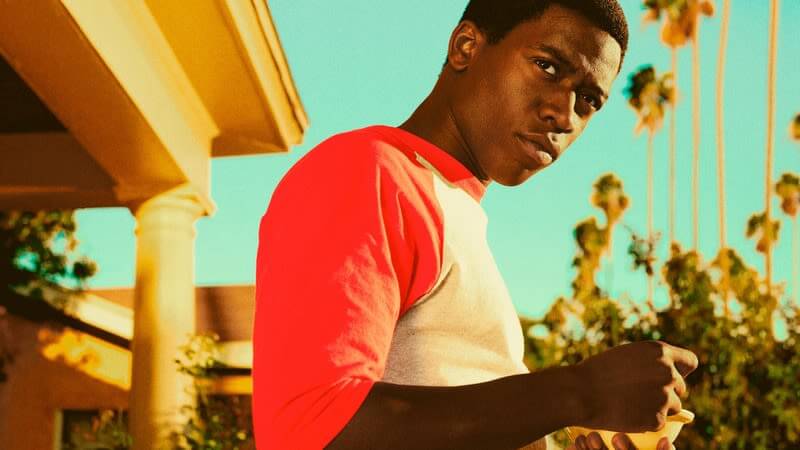
Rather than explore its groups and institutions—the cartels, street-level dealers, and government agencies—across multiple seasons, Snowfall’s introduced them all at once. The story implicates everyone from a soldier in the Nicaraguan jungle to the president of the United States, who are all poised for future run-ins. Early on, this just seems overly ambitious; it’s not until the second half that the series starts tying together these arcs. But like charming and calculating college dropout Franklin Saint (Damson Idris), Snowfall is thinking two or three moves ahead; and while that’s caused the occasional stumble, it’s also set up a compelling long game, one that it’s not too late to join. []
Subscribers long had access to St. Elsewhere’s first season, but now that the show’s complete run is back in circulation, you can more easily bear witness to the stranger paths traveled by the staff of crumbling St. Eligius, from the decade-spanning two-parter “Time Heals” (with Edward Herrmann as swing-loving hospital founder Father McCabe!) to the episode where the veteran docs decamp to Cheers to decompress over beers and Carla’s jeers. There’s plenty of compelling workplace drama and memorable characters (if you only know William Daniels as Boy Meets World’s Mr. Feeny, you must see his Emmy-winning turn as prickly heart surgeon Dr. Mark Craig) in between, but if you’re in it for the historic oddities, an episode that launched TV’s widest-ranging shared-universe theory—after all the viewers it infuriated calmed down, at least. []
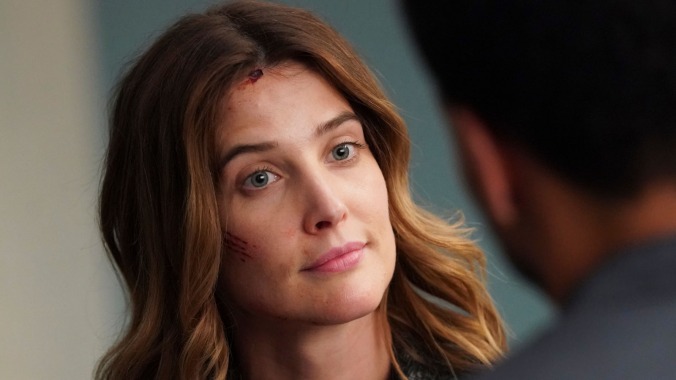
If you miss the days of 1970s bourbon-drinking, fists-flying, clever TV detectives, check out the new ABC series Stumptown. Based on a graphic novel, Stumptown focuses on Dex, a bisexual vet with PTSD who lives with her brother in Portland, as she kicks off a new career as a private investigator. Stumptown also functions as a kind of sequel for Donal Logue in , or if Jake Johnson’s character were an ex-con with a bar. For star Cobie Smulders, Dex is as far from ’s Robin Sparkles as you can imagine. Because of her military training, Dex is an unsinkable warrior, able to escape from her own trunk mid-traffic, or take down a mobster’s muscle with ease. Dex contains shades of writer Sara Paretsky’s gritty female private eye V.I. Warshawski—like V.I., Dex is determined to do the right thing, even though she makes many mistakes along the way. She is funny, sarcastic, unwilling to take no for an answer, and downright riveting as she battles her own demons alongside criminals of all sorts. []
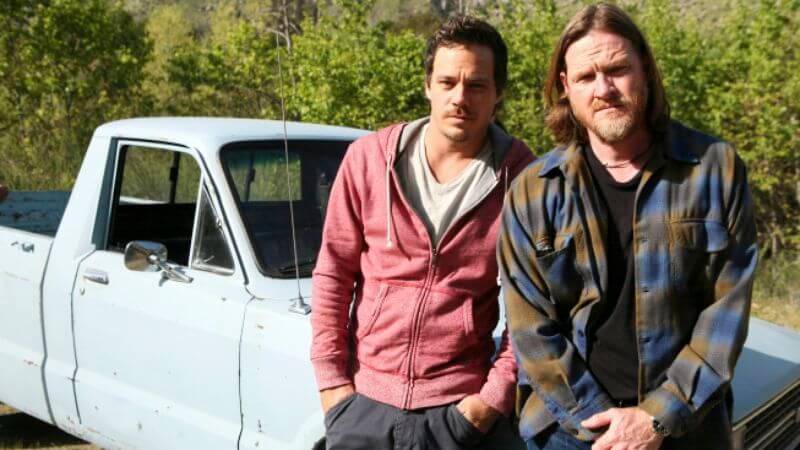
A brilliant mashup between crime drama and chill hangout comedy, FX’s Terriers starred Donal Logue and Michael Raymond-James as an ex-cop and reformed criminal who find themselves stumbling into a massive conspiracy as part of their private investigation business—none of which was conveyed in its infamously generic title. A show ahead of its time, Terriers did season-long mysteries and tortured-yet-charming protagonists before they were cool. []
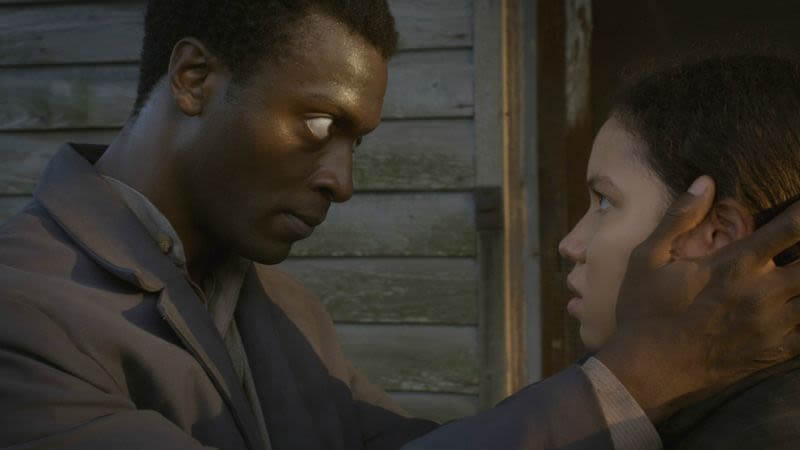
Reconstituting the horror of American slavery as a serialized drama is no small feat, since most people wouldn’t want to make a weekly appointment to watch the height of human cruelty. While Underground is certainly intense and emotional, it’s also surprisingly fun, borderline popcorn fare. By focusing on escaping slaves and their treacherous journey north, creators Misha Green and Joe Pokaski turn the period piece into a rousing adventure tale full of all the stunning betrayals and shocking twists expected of a contemporary thriller. [Joshua Alston]
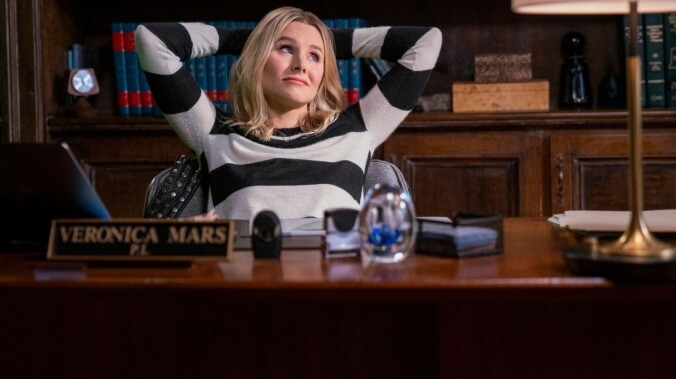
Running for three seasons on UPN and The CW, Veronica Mars followed the scholastic and investigative exploits of its eponymous character (Kristen Bell), who used to be a member of the Neptune High elite—until her best friend, Lilly Kane (played in flashbacks by Amanda Seyfried) was murdered, and her sheriff dad, Keith Mars (Enrico Colantoni), fingered the wrong man for the crime. The TV breakthrough for future and co-creator Rob Thomas, Veronica Mars garnered praise for its quippy dialogue, cunningly plotted mystery arcs, and deft handling of topical stories, and its cult following has twice brought it back from the dead: as a Kickstarted movie sequel in 2014, and as an eight-episode fourth season on Hulu. []
GET A.V.CLUB RIGHT IN YOUR INBOX
Pop culture obsessives writing for the pop culture obsessed.